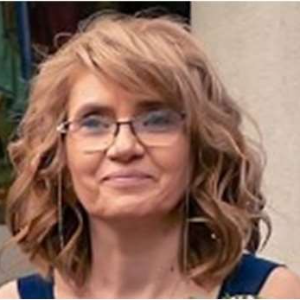Title : Nanometric structures on holographic labels imprinted via biodegradable polymers
Abstract:
Holographic labels (HL) are smart elements used to secure important documents, credit cards, banknotes, passports, deluxe products. HL have several characteristics that give them the advantage of being difficult to counterfeit due to the combining of several complex scientific knowledge in their design and fabrication processes, as well as expensive equipment for manufacturing and detection. They contain many graphical structures visible by human eye by diffraction in white light (solar light, artificial illumination), but also many submicronic or hidden structures revealed only with sophisticated instruments like microscopes, lasers or ellipsometers.
To increase the security level of HL, we introduced a new security element as diffractive optical element designed with quasiperiodic structures divided in fine structures. The optical effect that forms the desired image in the far field is part of the "hidden image" category and is only visible using a laser that illuminates the structures. In the design process, we divide the quasiperiodic structures resulted from Iterative Fourier Transform Algorithm into fine structures with submicronic dimensions. In this kind, the "hidden image" effect can be formed at certain desired angles and is doubled.
Thousands of millions of HL are produced annually, each series containing different security elements. Their fabrication process starts with a master produced by laser modulation in a photoresist on glass plate and ends with a polymeric plate which contains the microrelief to be finally embossed on an aluminium foil, i.e., the commercial product. It follows that many polymeric plates are used at every series of HL. For this reason, we replaced polymeric plates with biodegradable polymer plates.
The subsequent technology for imprinting HLs on the final foils is based on transparent, re-usable, eco-friendly biodegradable polymer plates, ensuring the faithful transfer of the submicrometric structures for the correct formation of the optical images and effects. To establish the optimal technological parameters (temperature, pressure, duty cycles) we have tested several variants in the laboratory using dynamic mechanical and thermal analyses. The full investigation of the submicrometric structures was achieved by introducing specific characterization procedures. We used hyperspectral imaging under enhanced darkfield microscopy for transversal characterization of nanometric details. Interference phase microscopy gives us the depth of the submicrometric structures with nanometres resolution.
In conclusion, we introduced submicrometric details designed as fine structures to increase the security level of HL, and we have greened the manufacturing technology by introducing biodegradable polymers that can be reused, ensuring the reliable transfer of submicrometric structures to accurately generate the optical images and effects.
Audience Take Away:
- The knowledge about holographic labels can be used to explain the visual effects formed by illuminating with white light the labels sticked on cigarette packs (for examples).
- Technological process to fabricate submicrometric structures via biodegradable polymeric plates can help to green other production processes as well.
- AIterative Fourier Transform Algorithm can be used in explanations at faculties for the design of quasi-periodic structures of diffractive optical elements.
- Practical solutions are to increase the security level of holographic labels and to fabricate them using more appropriate eco-friendly technology.
- Nanometric structures design and their evaluation by enhanced darkfield microscopy increases the degree of security in HL.


